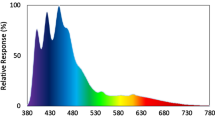Abstract.
The ahermatypic scleractinian Balanophyllia elegans has served as a model of limited larval dispersal in an aclonal species. However, other species from the same family (Dendrophylliidae) produce larvae asexually, and closely connected polyps of B. elegans, potentially the result of asexual reproduction, are commonly observed in the field. Here, we use a combination of laboratory experiments, controlled crosses, and genetic surveys of field-collected individuals to demonstrate (1) marker allozymes are inherited in accordance with Mendel's laws, (2) polyps that are connected in the field are not genetically identical, and (3) laboratory manipulation of a single polyp can produce a second polyp on the aboral side of the original, but not adjacent to the original. In combination, these results suggest that the larvae of B. elegans result from mictic sexual reproduction, and that connected polyps result not from asexual budding but rather from the fusion of genetically distinct individuals.
Similar content being viewed by others
Author information
Authors and Affiliations
Additional information
Electronic Publication
Rights and permissions
About this article
Cite this article
Hellberg, .M., Taylor, .M. Genetic analysis of sexual reproduction in the dendrophylliid coral Balanophyllia elegans. Marine Biology 141, 629–637 (2002). https://doi.org/10.1007/s00227-002-0861-2
Received:
Accepted:
Issue Date:
DOI: https://doi.org/10.1007/s00227-002-0861-2




